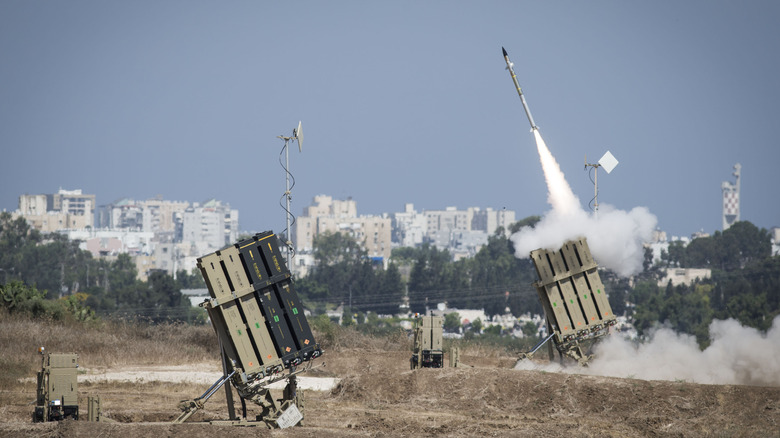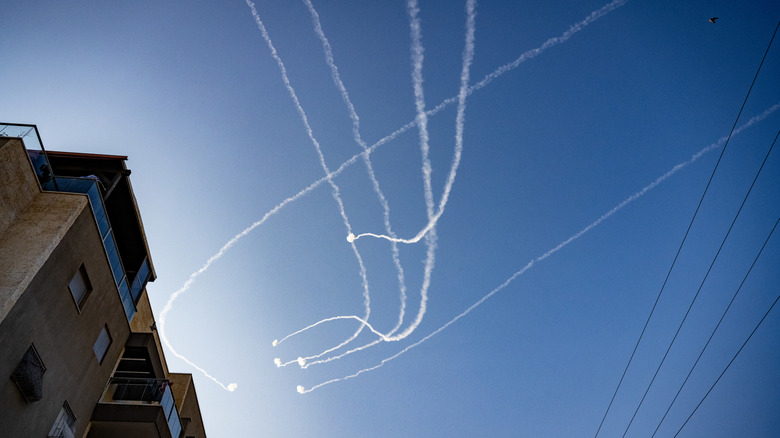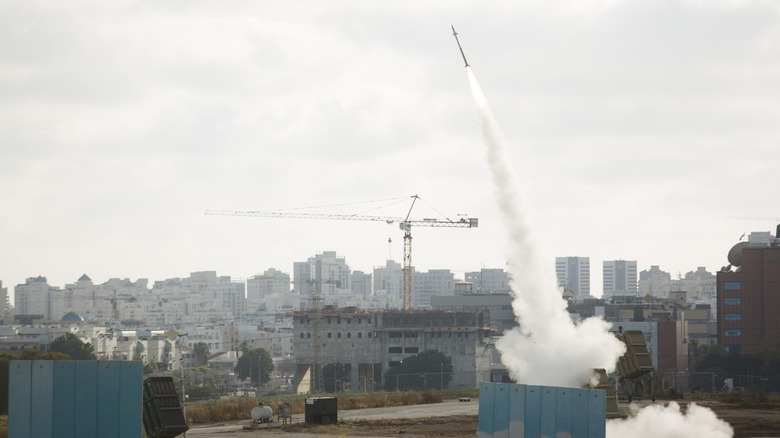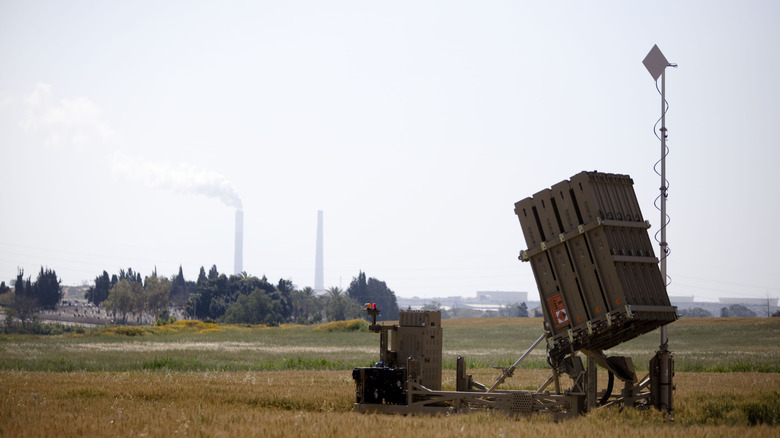How Israel's Iron Dome Works (And Why It Doesn't Intercept Every Missile)
If you have watched any news coverage of Israel's conflicts against Hamas, Hezbollah, or Iran, you have likely seen Israel's "Iron Dome" airborne threat defense system in action. Raytheon, one of the developers of the defense system, claims that it's the "world's most used system" of its kind. Rafael, an Italian defense company that also develops the Iron Dome, says that it has made more than 5,000 successful interceptions over 14 years since it was first deployed in Israel.
So what is the Iron Dome? How does it work? And what are its shortcomings? First, Iron Dome is the brand name given to its tailor-made missile defense system. It was developed jointly by both Raytheon and Rafael in 2011 and, in basic terms, uses missiles to intercept other missiles. Additionally, it can be used to intercept smaller targets like individual mortars, short range rockets, and artillery shells. It has also proved effective in the ever-changing battle against drones. For threats at a higher altitude, the David's Sling defense system takes over.
How it protects against threats
The Iron Dome doesn't describe a single missile or missile launcher. It's a system of different components that work together to make a "net" of sorts over Israel's cities or otherwise populated areas. Raytheon notes that, all told, there are 10 individual Iron Dome batteries located around Israel.
Each battery consists of missile launchers (either three or four launchers), a radar installation, and the actual missiles. Israel uses its own "Tamir" missile, supplying 20 per battery. The Tamir has the advantage of being comparatively inexpensive, reportedly between $40,000 and $50,000 for each missile. For reference, a Patriot surface-to-air missile can cost well over $3 million each.
Once a threat is detected by the Iron Dome's radar, it launches a Tamir missile to intercept. The missile is guided via not only a datalink to the radar system and Israel's missile operators, but also an onboard radar system. That means that once the missile is launched, if it loses connection with forces on the ground, it can still intercept.
The system's limitations
The Iron Dome's manufacturers say that the system has an overall greater than 90% success rate when it comes to intercepting projectiles. For an interception to not occur, one of two scenarios need to play out. This first, most common scenario is when an interceptor missile is intentionally not fired when the radar system determines that an oncoming rocket, drone, or other airborne threat poses no direct threat to the population on the ground. Rockets fired by Hamas oftentimes have no onboard guidance system and can over (or under) shoot the intended target.
The second scenario that results in a failed intercept is when the air is so filled with incoming threats that the radar and missiles are unable to compensate. The exact failure point, meaning the number of incoming threats it takes to overwhelm the Iron Dome, for obvious reasons, is not publicly known. Still, the interception system is robust enough to track and neutralize incoming threats in all weather and atmospheric conditions.
The Iron Dome in the future
The Iron Dome missile system has also been expanded to cover naval operations. That individual system is called "C-Dome." Instead of relying on ground-vehicle based launchers, the C-Dome launches interceptors from warships in the Mediterranean Sea. Given the overall defense apparatus' success, the same technology is being developed for other countries, including the United States. Export versions are given the "SkyHunter" name by developers Rafael and Raytheon. Two batteries have already been delivered to the United States Army for threats it faces overseas.
Given both recent tensions with Iran reaching a fever pitch in the past few weeks, and Israel's unique place in the Middle East, both locationally and geopolitically, it doesn't look like the Iron Dome system is going to be taking breaks anytime soon. As such, the system will get more and more updates in upcoming years to be able to overcome issues with target saturation and the ever evolving nature of incoming ordnance.



